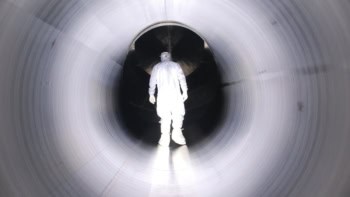Six months ago a controlled explosion in eastern Kazakhstan gave seismologists their first chance to test the system set up to monitor the Comprehensive Test Ban Treaty (CTBT). The aim of the treaty, which still has to be ratified by some nuclear weapons states, is to ban all tests of nuclear weapons. According to Alan Douglas and colleagues at the UK’s forensic seismology unit at Blacknest, Aldermaston, the world-wide chain of seismic stations can spot explosions 10 times smaller than it was designed to detect (Nature 398 474).
Governments that have signed the CTBT – which will come into force this September – are concerned that countries such as Iran, India and Iraq might try to develop so called ‘sub-critical’ nuclear tests. These explosions are below the 1 kiloton limit agreed in the CTBT.
To check if the 321 seismic stations that make up the CTBT monitoring network could detect these sub-critical explosions, the US and Republic of Kazakhstan decided to detonate 0.1 kilotons of conventional explosions at an old Soviet nuclear test site at Degelen mountain in Kazakhstan.
According to Douglas and his colleagues, seismic waves from the explosion were detected as far away as Australia. The prototype CTBT international data centre – which analyses and stores all the data from the monitoring network – also pinpointed the explosion to within 12 km of the epicentre. As no surface waves were perceived by a seismic station in the Russian Federation – close to the old test site – seismologists were able to prove the explosion was not an earthquake.
However, Kazakhstan has an ideal geological structure for transmitting seismic shocks and the researchers also knew the exact time the explosives were scheduled to detonate. By carrying out such tests in an underground cavern, or by muffling the explosions in sand dunes, explosions greater than 1 kiloton could still go undetected.



